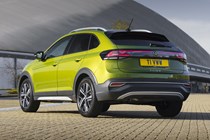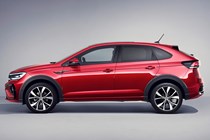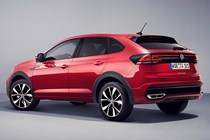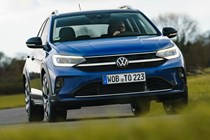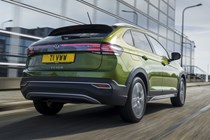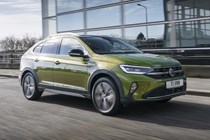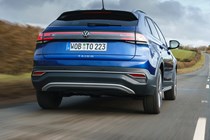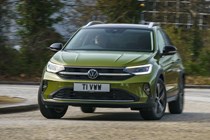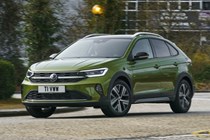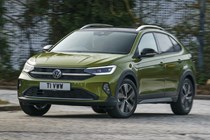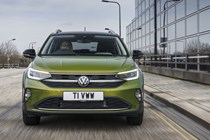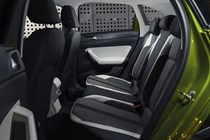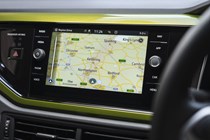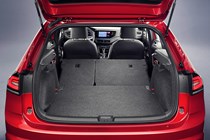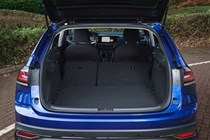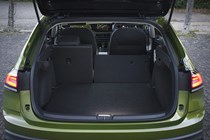
Volkswagen Taigo long-term test
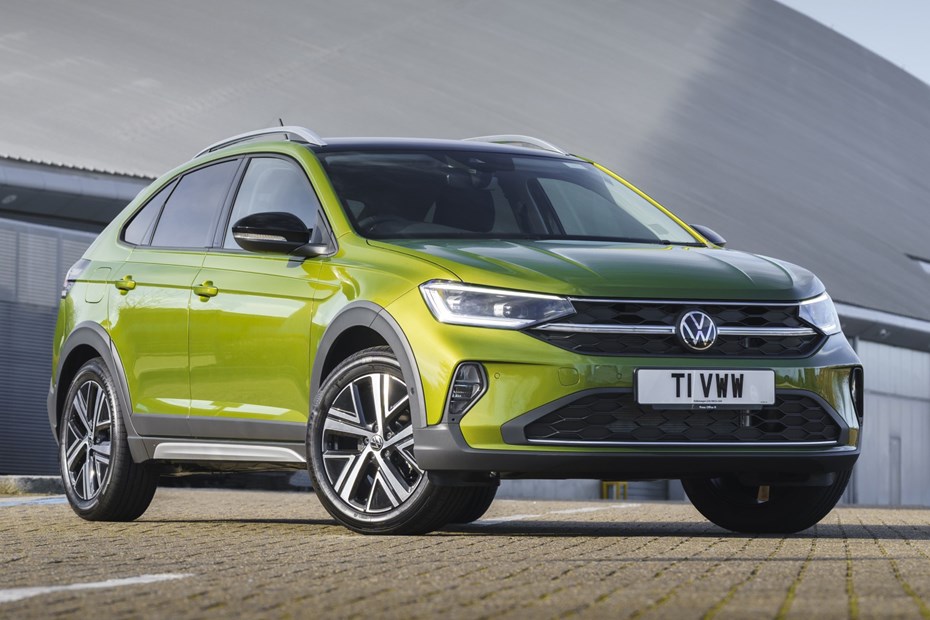
Set fair with a Mazda 2 Hybrid for the summer and into the later part of 2024, Parkers content mogul Steve ‘Percy’ Lawman gets an unexpected quick car swop as an unannounced visitor jostles in on the action.
Report by: Percy Lawman – Last Updated February 10th 2025
Update 1: Welcome and introduction
Update 2: Equipment, options and specs
Update 3: beatsAudio – factory upgrade option
Update 4: ‘The Pasty Run’ – a Trip to Cornwall
Update 5: Buying and Owning a new Taigo
Update 6: Verdict
Update 1: Welcome and introduction
Well, life is full of variety. Just when I thought I’d be running our newly arrived Mazda 2 Hybrid for 6 months, a newly arrived VW Taigo pushed its butt into a prime slot in the Parkers car park wanting to get in on the action.
So not being one for letting an opportunity pass us by, the team re-arranged the ‘Who’s driving what’ rota sheet and I’m now the proud temporary owner of VW’s 2024 Taigo.
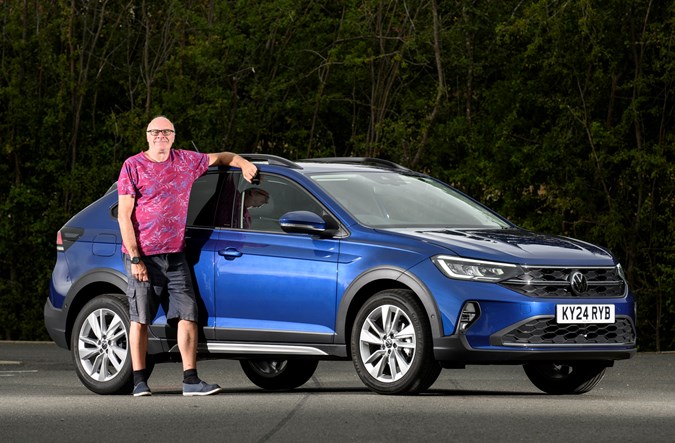
Sometimes you get the ‘I’ve been here before’ feeling. Well, after jumping into our new Taigo, my mind shot back to the later part of 2018 as this car had a very familiar resemblance and similarity when compared to the SEAT Arona.
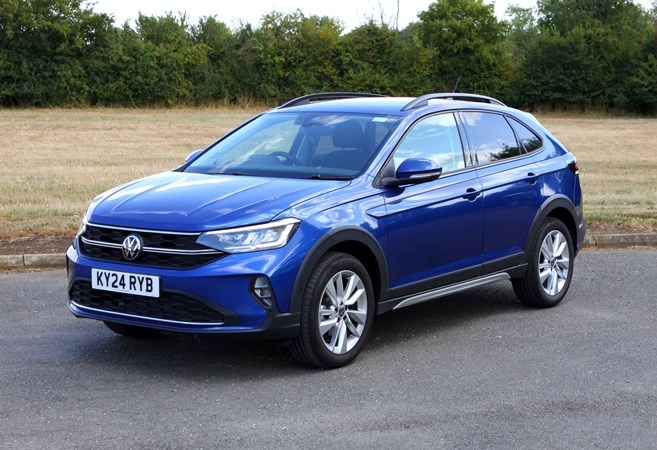
Checking over various data, it soon became apparent that I wasn’t far wrong. It runs on the same MQB A0 platform as the Arona, Ibiza, as well as VW’s Polo and T-Cross and Skoda’s Fabia and Kamiq. The Taigo is 150mm longer than the T-Cross and 37mm shorter than the T-Roc and has a ride height comparable with other SUV’s. It’s noticeable that there’s an increasing number of so called ‘Coupe/SUV’s’ appearing on todays roads. It seems you can mix and match any body style you want these days.
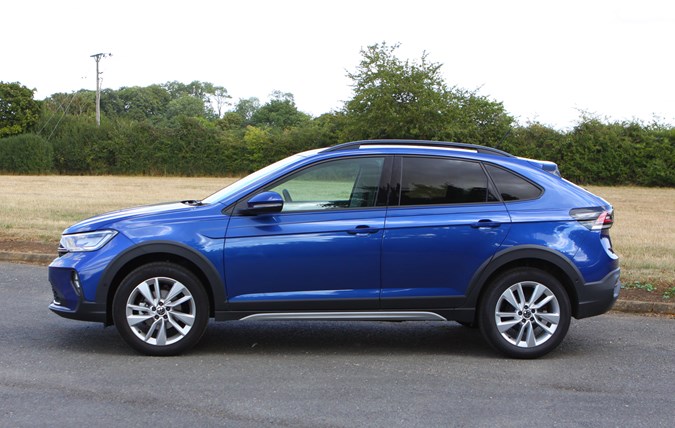
VW’s Taigo appeared in the UK in the first quarter of 2022 and is now part of an eight-strong line up of SUVs from the VW stable.
Our new arrival is KY24 RYB – a brand new 2024 Taigo in ‘Match’ trim with ‘Reef Blue’ metallic paintwork and Titanium black upholstery in ‘Sash/Austin’ cloth. Fitted with the 95ps 999cc 3-cylinder 5-speed manual TSi engine, this is the lowest power output offering of the Taigo range.
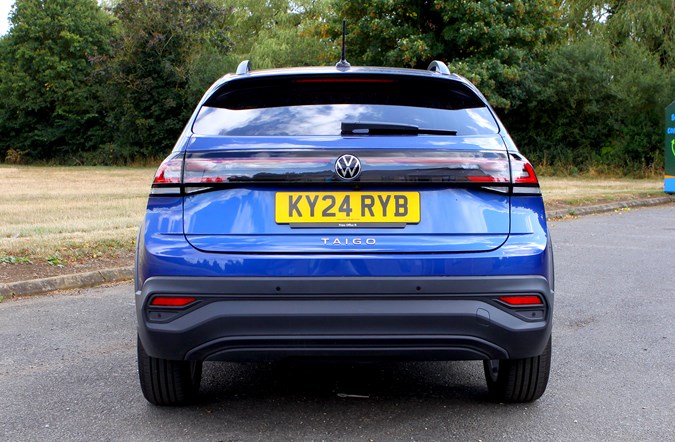
There are alternatives with the 999cc 110ps 6-speed manual gearbox, a 7-speed DSG transmission and a range topping four-cylinder 150ps version which is combined with a single option 7-speed DSG. VW have already announced that they believe the 110 ps 6-speed ‘Taigo Life’ trim level could well be the most popular in the UK. At the time of writing, there’s no diesel engine offering in the mix.
We’re keen to see how the lowest output engine performs over a variety of driving scenarios as a 95ps petrol manual is really quite small given the size of the vehicle. The 0-62mph is claimed at just over 11 seconds so not that stellar.
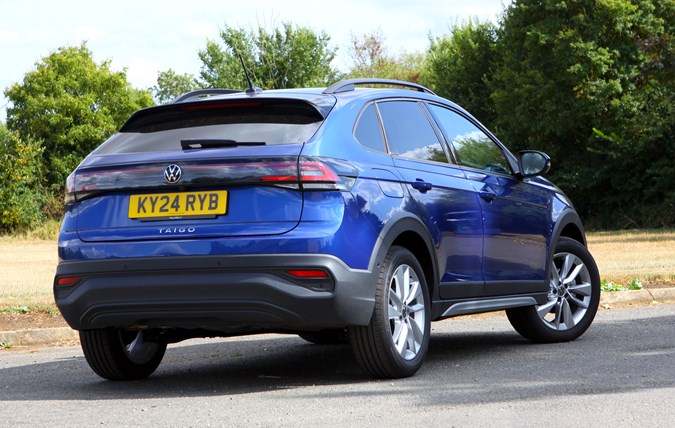
Part of our real-world driving assessment and testing will involve a trip from East Anglia down to Cornwall which will take in a mixture of Minor, ‘A’ and ‘B’ roads plus the odd motorway dash. It will be interesting to see how well the car copes with a run across Bodmin Moor and on the return ‘Exmoor’ – plus some twisty undulating Cornish roads thrown in for good measure. We’re not going to fully load the car and they’ll only be two adults so we are giving it a better chance of success!
Update 2: Equipment, options and specs
VW’s Taigo sports five different trim levels. These being ‘life, Match, Style, R-Line and Black’.
The basic entry level ‘Life’ trim gets 16-inch alloy wheels as standard, together with automatic LED headlights, rain-sensing windscreen wipers, adaptive cruise control and electrically heated wing mirrors.
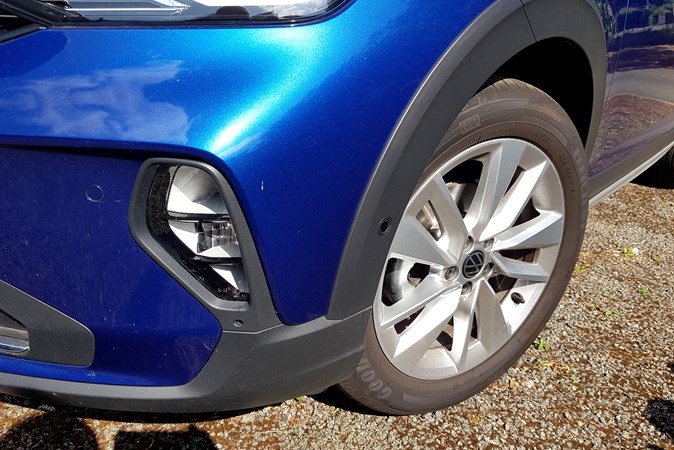
Mid-spec ‘Match’ [our own car] doesn’t cost that much more and adds 17in wheels, keyless entry and a very useful reversing camera into the mix. ‘Style’ adds matrix LED headlights, sports seats, silver roof rails and a larger 10.3-inch infotainment touchscreen with built-in navigation.
The high-end ‘R-Line’, does without the LED matrix headlights but gets sportier exterior styling and the ‘Black Edition’ gets the chunky 18-inch wheel option and additional black edition styling.
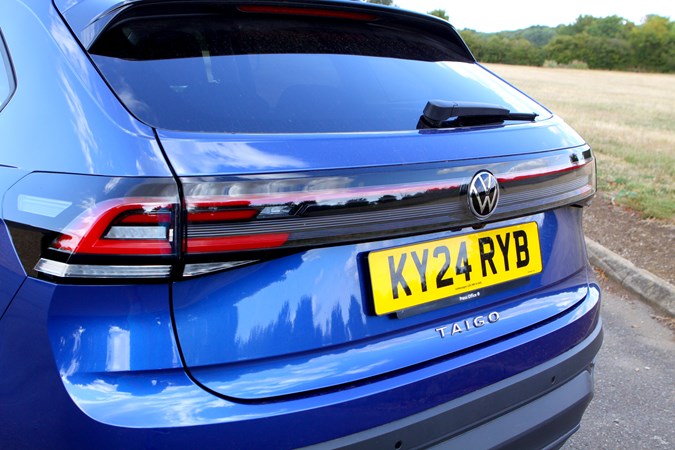
Factory options on our ‘Match’ which are over and above standard equipment also include the following:
- Beats Audio Sound System with a digital 8 channel amp and 6 speakers at £680
- Air Care ‘Climatronic’ 2-Zone air-conditioning at £495
- Heated front seats at £340
- Carpet mats [Front and rear] at £110
We’ll have a more in-depth rundown of the ‘Beats’ audio upgrade later in the review as I’ve had similar experiences with this system in the past.
Our 999cc ‘Match’ EURO 6 petrol unit has the lowest output [95ps] of all available engines. Sporting a 5-speed manual gearbox, the claimed 0-62mph is 11.2 seconds and an engine torque of 175 N/m between 1600 and 3500rpm.
In the real-world we found the 0-62 figure to be rather optimistic especially with a [tight] brand new engine. The engine also seems happier revving above the 2000rpm mark. Below this, the car feels quite sluggish.
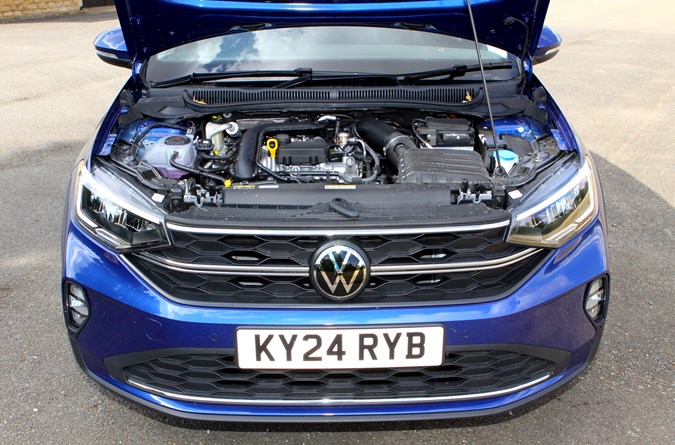
Top speed is shown at 114mph and the CO2 emissions [WLTP] are 126g/km. Fuel consumption [again WLTP figures] – varies between 40.9 and 58.3 mpg depending on the driving situation. Insurance grouping is set at 13 E and the annual first year VED [Road-tax] for the new vehicle is £220. On the road price is £26,045 and with factory fitted options tops out at £27,670. BIK tax is rated at 29% based on a 20% basic rate tax payer.
You can check out the full specs on our Taigo here on Parkers.
Update 3: beatsAudio factory upgrade
For anyone that’s followed some of my past reviews, you’ll know that I have an avid interest in audio. Having been involved in the setup of a local hospital radio station in the 1970’s, DJ’ing and being an active amateur radio operator, tinkering with audio related hardware seemed somewhat second nature.
Back in 2018, our long-term SEAT Arona had the very same factory ‘beatsAudio’ optional upgrade, as did VW’s T-Roc in 2019. In both these instances, I felt it didn’t quite tick all the boxes. So, fast forward to 2024.
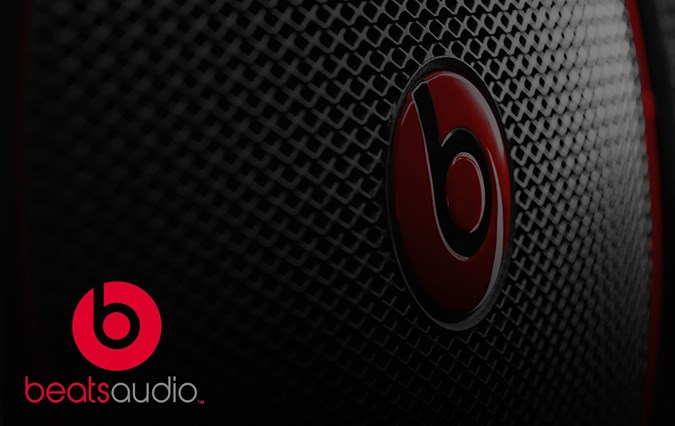
The ‘Beats’ brand was founded by music producer and rapper Dr. Dre and Interscope A&M records co-founder Jimmy Lovine back in 2006 and is synonymous with the rise in popularity mainly of electronically EQ’d ultra-expensive aftermarket headphones. An area frequently sneered and jibed at by true audiophiles. Beats was acquired by Apple Inc. in July 2014. So, has anything changed with ‘Beats’ since my last experiences?
VW has now split its ‘Premium Audio’ in-car options into three specific ranges which are dependent on the model.
For the Golf, Tiguan, Passat and Arteon – Harman Kardon is the choice partner. For the Polo, Up!, T-Cross, T-Roc and Taigo – beatsAudio is the order of the day. The Toureg gets a much higher end system by respected Danish/Chinese audiophile gurus Dynaudio.
The Taigo specs are advertised as a 6-speaker system and 300w amp. The 6-inch sub which is actually 2x50w and 2×2 ohms looks to be a dual voice coil unit as it has 4 dc input wires and is located in the floor well under the boot floor. It sits nicely inside the space saver spare wheel and is quite a neat and tidy affair.
The heart of the system is a DSP (Digital Signal Processor) and a 300w amplifier which is located underneath the passenger seat. As per the 2018 flavour, this is a Panasonic 8-channel amp manufactured in Slovakia
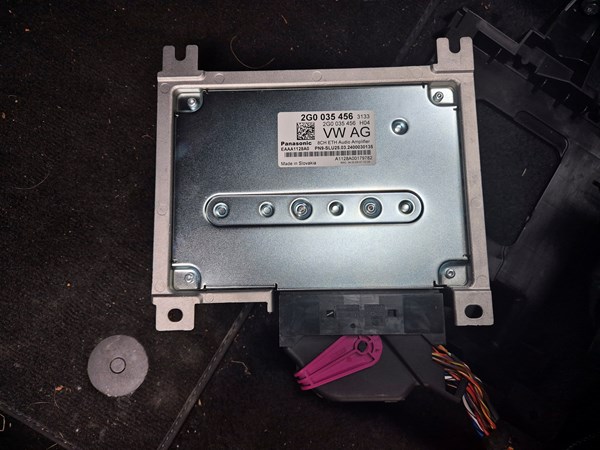
The unit drives seven sound system speakers in total. Two full-range door speakers, two full-range speakers in the rear, two tweeters in the A-pillar for the high frequencies and one subwoofer integrated in the spare wheel well. Positioning of the sub in the boot space is clearly marked (‘front’) as it seems to be directional to some degree. The dual driver looks to be manufactured by PSS of Hungary. Also known as ‘HSS’ (Hungarian Speaker Systems), it has manufacturing outlets in both Europe and China. There’s wasn’t much info around back in 2018 and the case is the same today. The speakers look be an ‘in-house’ PSS offering, but there’s’ no technical data around. However, I did find the exact sub-woofer acoustic assembly used in the Taigo and other VW vehicles here.
The sound experience is a good step-up on standard and there’s an obvious change from what I reported back in a 2018 review of a similar installation. The previous ‘EQ’ had only 3 bands which didn’t give the user much control over the final output, but we now see an additional 4th separate low frequency [l/f] band [assigned solely to the sub] which now shows in the setup menu.
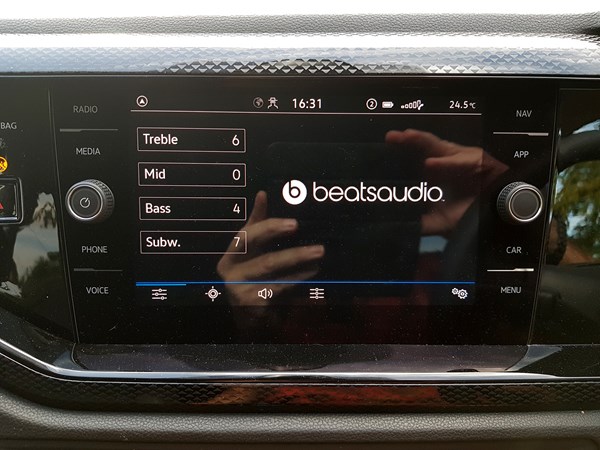
This means the user can now control the sub which will most certainly drive all the really low frequencies [most likely at 150hz and lower] and the ‘Bass’ control is now separate controlling around the 100-300hz area. We can’t say for sure the exact cross-over frequencies as there’s no published info but being able to tailor the output with this additional user control gets the thumbs up here.
There’s a hefty bass response from the sub which kicks out a healthy tub-thumping throb and there’s plenty of rumble and lots of pumping mid-bass slam too, just as before – but the system does feel a little more refined. OK not audiophile, but a genuine step-up from the 2018 review I did of a similar setup in SEAT’s Arona.
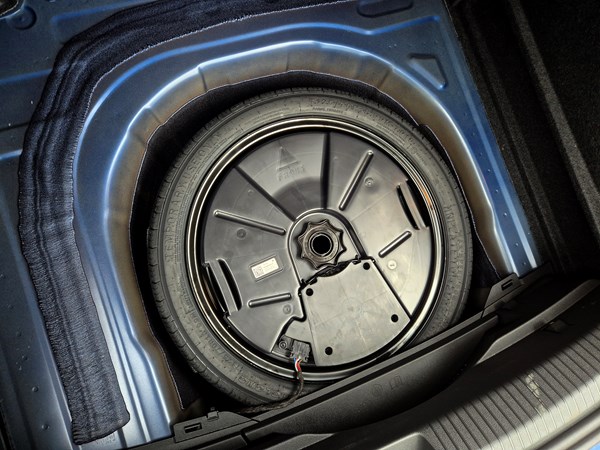
For the price [£680], the beatsAudio upgrade still offers very good value for money and for what you get, is a recommended choice. If you went down the route of acquiring the equivalent hardware separately then you’d probably be looking at more of a spend. On the flipside, you’d have a massive choice of different manufacturers and could probably have a better sounding system. We did notice that there’s a couple of YouTube videos doing the rounds especially on upgrades to the [stock] 6” HSS sub.
Overall, the system handled most things played although it’s not really a high league player. Even so, for what it offers, it sounded reasonably good for pure mobile entertainment and did the job required although it seems to be tailored towards a younger audience.
Summary and Conclusion:
Beats are still a predominantly fashion-forward brand rather than having a serious audiophile offering, but then it’s not been designed with that in mind. The upgraded EQ which now has a separate control for the sub is a welcome addition. We think it’s a worthy upgrade given the price and hardware.
Click on the image below for the ‘Beats’ specs across VW brands Polo, Up!, T-Cross, Taigo and T-Roc.

Rather than duplicate many of my 2018 findings here, there’s a full in-depth rundown on the beatsAudio in the SEAT Arona. Check my review here.
Update 4: ‘The Pasty Run’ – A Trip to Cornwall
I’ve been quite lucky in that our Taigo arrived just as the summer started. As we’d already pencilled in a trip to Cornwall [the famous ‘Pasty-Run’] with my wife, taking the Taigo would be a good choice as it would give us the opportunity to run the car over a variety of differing road locations and conditions.
In the interim, we have had use of the car for about 2 weeks prior and have been getting a good feel of how it performs over fairly flat roads in East Northants. Our local area lacks any hills as such apart from a few minor rises and falls here and there. It’s not Fenland as such, but not far short of it!
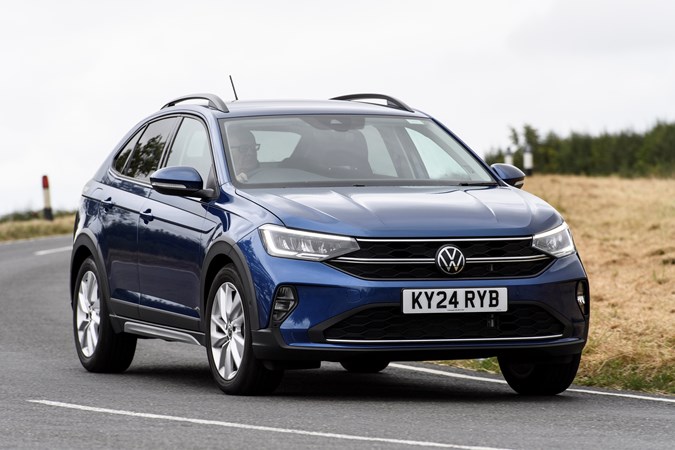
Even a car with the smallest engine [999cc] and the lowest output [95ps] is easily capable of handling day-to-day driving around our locality. The Taigo was no exception. Trips to town, ferrying people around, helping out with school runs and the odd trip to the local mini-market was performed with ease and there were no surprises.
On one occasion, we had two adults and a child on board [with no luggage] and felt the car required just a little more effort on the throttle to spice it into life. This is on a reasonable incline not far from our village. The small 999cc 3-cylinder engine has a pleasant burble when throttled hard, similar in fact to what I experienced with the VW Up!
So, with a couple of weeks local driving under our belt, it was time for the Taigo to show off what it was capable of when out and about on the open road. I was conscious that our car was only a 95ps output unit and had reservations about how this would translate into real-world driving.
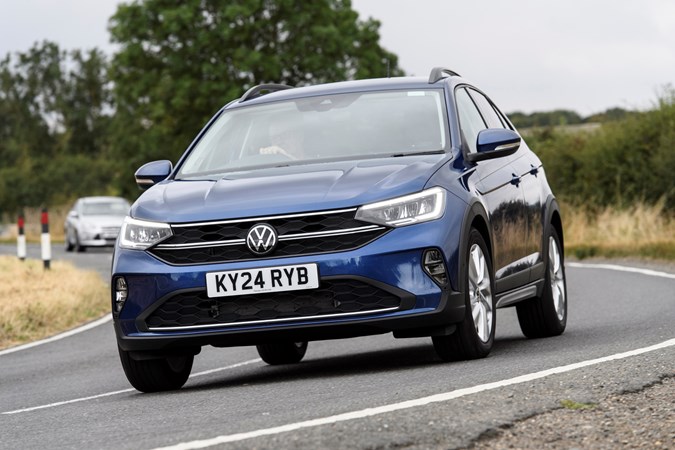
We had planned a week’s vacation in Cornwall, so with 2 adults and 2 large cases in the boot we set-off at silly o’clock in the morning. My better half always insists on leaving at around 2.30am to avoid the snarl ups which seem to be standard now on a summer trip to the West Country whatever the day of the week.
Initially we took in a mixture of both ‘A’ and ‘B’ roads from the Northants/Cambs border.
We then proceeded across country via Bedford, Milton Keynes and Oxford and onto the M4/M5. Some would say, not a direct route, but this gave me a good variety of differing road conditions rather than just a long motorway and ‘A’-road slog.
The initial part of the journey was completed without any surprises although the constant stop-start around the multitude of roundabouts in the Milton Keynes area made the car work just that bit harder.

On the motorway sections of the M4 and M5, the Tiago seemed quite at home, cruising between 65 and 70 mph. Saying that, there’s no ‘real’ super inclines or sections of road that would punish a small car.
One aspect of our journey was to check over the fuel consumption. Original WLTP figures and data showed that the car’s range should be in the region of 40.9mpg on the low side up to around 50.6mpg combined.
In the real world, we found the car actually struggled to hit the low end and it became obvious that the constant stop-start situations we experienced wasn’t doing the fuel economy any favours at all, dipping below 40mpg at some stages.
This was exacerbated even more so when we began to experience the long fast stretches of the A30 and A38 going into Devon and Cornwall. The low output of the Taigo then became very apparent with the speed dropping quite dramatically, especially whilst of the Devon Expressway. Inclines gave the car something really extra to think about and we frequently saw a 65mph cruise turn into a 45mph wheeze. In some instances, a drop of two gears was required to try and keep some kind of pace in the journey.

Getting a second opinion from my co-pilot is always important in any evaluation we perform and whilst she thought the Taigo was actually quite comfortable given the journey time [I concur in that area for sure], she said that if she was buying the car, she’d avoid this engine as it just wasn’t ‘up to it’.
Arriving into Penzance we actually felt pretty fresh. The Taigo isn’t a car that feels like it’s a handful to drive, rather the opposite. I think given a larger output power unit [the 110ps or 150ps options for instance], would have make the hilly sections just that more pleasant to tackle. I’ve driven the same 1.5 150ps DSG version in the SEAT Arona and that’s a great engine.
On the return journey, we decided to rumble across Bodmin Moor on the A30 rather than A38, popping into Jamaica Inn en-route for a few souvenirs and to do some touristy type things. Unfortunately, the drive again across the fast-undulating A30 was a somewhat damp-squib affair. Many sections of the A30 have now been improved over the past year or so with additional dual carriageway sections being introduced. It’s generally a faster road [when conditions allow] – but whilst this is great for everyone jaunting off on holiday to the South-West, if you’ve a car that feels the pinch when tackling the high moorland roads, then it kind of makes the journey seem overly long and somewhat tedious.
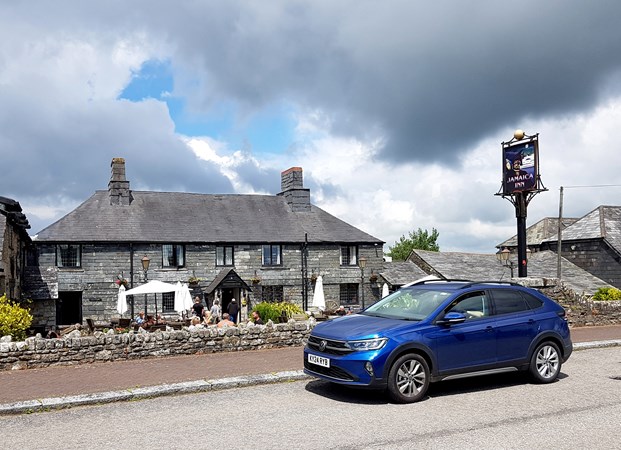
Parking the car is a doddle as all versions of the Taigo come with front and rear parking sensors as standard and parallel parking for you which works exceptionally well. If you upgrade to Match or above, you’ll also add a fairly high-resolution rear-view camera which gives a great view of the side and rear of the car when reversing.
Driving aside, the Taigo scores extremely well with the current testing from safety aficionado’s Euro-NCAP. In its one and only test [in 2022], the car scored the full 5-Stars cementing the fact that VW continues to churn-out vehicles that are about as safe as current technology allows.
So, enjoy a pasty and check back with us in December when our valuations team analyse what it’s like to own a new Taigo and what to expect on a future valuation. At Parkers, our team liaises daily with our trade partners at CAP/HPi whose market intelligence on used car valuations is unrivalled.

Update 5: Buying and owning a new VW Taigo
If you’ve decided to take the plunge and treat yourself to a new Taigo, then there’s a plethora of buying options available to potential purchasers. You can purchase a brand-new car directly through Volkswagen’s UK website. The interface is great to use and is very intuitive. You get the frills of buying through the official UK dealer network and you’ll get all main/franchised dealer services and full manufacturer backup support will be on hand as well. Start your buying journey here by building your own from scratch or see the current array of available new stock.
Moving away from the manufacturers buying options, there can be some very tempting deals that surface from the various independent dealers across the country. In searching for a Taigo we came across an appealing deal from internet dealers ‘UK Car Discount’ and for members of the armed forces [or ex] forces service personnel, ‘Forces Cars Direct’ offered even more money off the ‘RRP’ figures with some very mouth-watering discounts. For these examples, we’ve picked a mid-range car with the 110ps diesel power unit and a 150ps petrol.
For buyers interested in a ‘nearly new’ example, the manufacturer offers its own ‘Approved Used’ scheme which is of course serviced and backed up by the many main dealers across the country. There’s certainly no shortage of late used examples and a search in Mid-Dec 2024 revealed over 570 cars. Anyone in the market for a late, clean, low mileage used example with full dealer support will have an unrivalled choice.
In the independent arena the choice isn’t quite so vast, but for buyers interested in a ‘nearly new’ example, then a trip to ‘Motorpoint’ or one of the many other car supermarkets reveals extended savings on low mileage cars not that old. You’ll still find a great deal and car supermarkets are known for offering some of the best pricing deals around, although the trim level choice may not be quite as comprehensive.
Financing your new car
For buyers interested in financing their own car, Parkers Car Finance, in partnership with ‘CarFinance 247’, works to find the right finance deal for you so that you can get the car you really want. CarFinance 247 work with a panel of lenders, so we can look to find finance options for people with a variety of circumstances.
On the flip-side there are many tempting monthly PCP and PCH finance options. The current manufacturer PCP Offers are shown here and below is a typical outlay on an example car [1.0 TSi Style 115ps DSG].
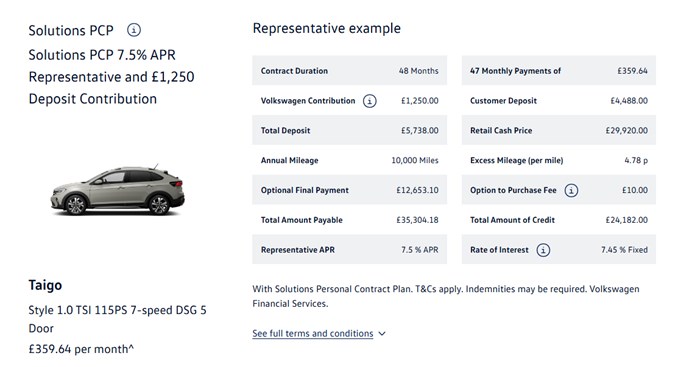
Independent outlets such as ‘Nationwide Vehicle Contracts’ also offer a variety of contract types.
FRV’s [Future Residual Values]
FRV’s is the acronym for ‘Future Residual Values. FRVs relate to how much a car is worth after a certain number of years and miles covered and is expressed as a percentage of original value. As an example, a car with a 50% rating will be worth half its original value, while one with a 35% value will be worth just over a third of the list price.
If you decide to own your car outright, buyers will want a car that has a high residual value – as you’ll get more back when you come to sell it. Used buyers can benefit from those cars that lose value quicker as these are cheaper to buy second-hand. Cars with a low FRV frequently make a good second-hand buy.

The good news here for new owners is that the VW Taigo enjoys a fairly high FRV. For example, our own car [Taigo 1.0 TSi Match, manual with the 95ps engine] has the following FRVs. We’ve included some sample potential mileages across a 5-year time period.
One year, 10,000 miles – 64%
Two Years, 20,000 miles – 57%
Three Years, 25,000 miles – 51%
Four Year, 30,000 miles – 45%
Five Years, 40,000 miles – 38%

Other models in the range also fair pretty well. We’ve included a 115ps petrol, manual in ‘Style’ trim and a 150ps DSG R-Line for comparison. Looking at these tables, you won’t go wrong with any.

As of the time of writing, our own car [VW Taigo, Match 95ps manual] has the following used valuation based on the 3000 miles covered as of December 2024.
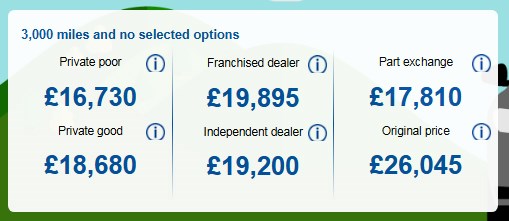
FRV data kindly supplied by our B2B partners at Solera CAP/HPi – December 2024.
The various deals shown in links on this page are indicative examples of some packages available as of 9 December 2024, but are subject to change without prior notice. Everyone’s financial circumstances are different and the availability of credit is subject to status. Terms, conditions and exclusions may apply. Parkers cannot recommend a deal for you specifically.
Update 6: Verdict
What’s to like:
- beatsAudio still offers an excellent value-for-money upgrade but is tailored for a younger audience but it’s not in audiophile territory. We do however recommend it.
- Comfortable on longer runs
- Excellent rear parking camera system
- 150ps DSG engine is excellent
Points for debate and discussion:
- Avoid the 95ps engine unless you’re a 100% city driver or you live in the ‘Fens’. We feel the performance is lacklustre at best and the 110/115ps option would be a far better all-round choice.
- Fuel economy is not that good as the lowest capacity engine has to work much harder to get anywhere.
- Some controls [i.e. screen/cabin heating] are difficult to access whilst on the move
- Overspeed warning. We’re not sure that the digital ‘Guy with a spoon banging a glass bottle’ works. Everyone found it really annoying. The system was often not aligned with real-world speed limits causing mis-reports.
Report by: Percy Lawman – Last Updated February 10th 2025



